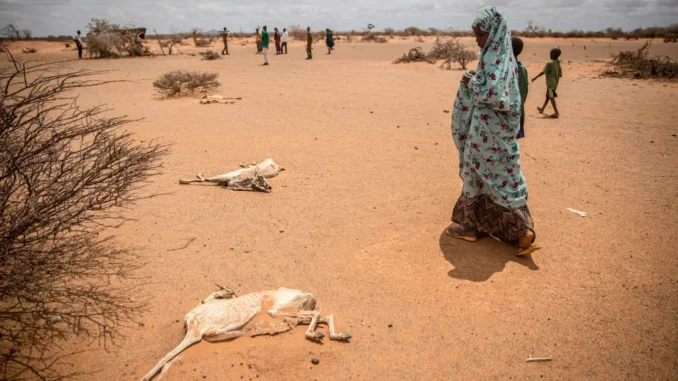
The record drought in the Horn of Africa could lead to 135 deaths per day in Somalia between January and June, the Somali Ministry of Health, the World Health Organization and the UN agency Unicef said in a study released Monday, 20th March.
The WHO had previously warned that nearly 100,000 people in Somalia were facing catastrophic levels of hunger due to the worst drought to hit the region in 40 years.
According to the study released Monday, between 18,100 and 34,200 people could die from the consequences of drought in Somalia in the first six months of this year. The extreme weather could have led to 43,000 “additional deaths” last year compared to the 2017 drought, the study added, noting that half of the victims would be children under the age of five.
The paper was commissioned by the UN children’s agency UNICEF and WHO and conducted by the London School of Hygiene and Tropical Medicine and Imperial College London.
“We are in a race against time to prevent deaths and save lives,” said Mamunur Rahman Malik, WHO representative in Somalia. “The cost of our inaction would mean the deaths of children, women and other vulnerable people.”
Five consecutive rainy seasons marked by severe water shortages in parts of Kenya, Ethiopia and Somalia have killed millions of livestock, destroyed crops and forced more than a million people to leave their homes in search of food and water.
Meteorologists expect a sixth rainy season to come with a severe water shortage, heightening fears of an unprecedented humanitarian disaster on the horizon, particularly in Somalia. That country was already hit by a famine in 2011 that killed 260,000 people, more than half of whom were children under the age of six, in part because the international community did not respond quickly enough, according to the UN.
In 2017, more than six million people in Somalia, more than half of whom were children, needed aid due to a prolonged drought in East Africa. But early humanitarian action had averted a famine that year.
